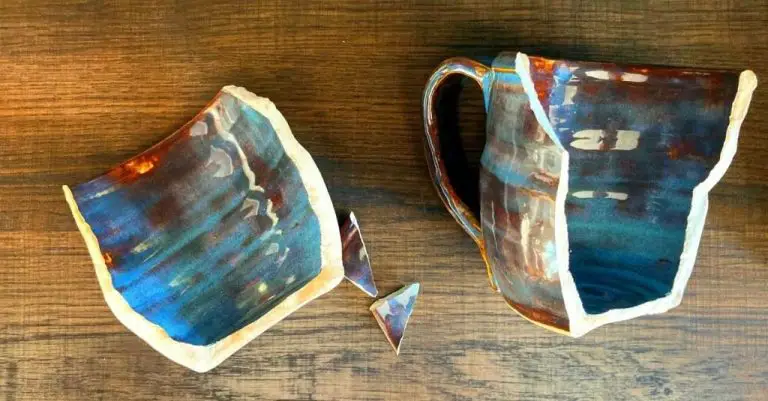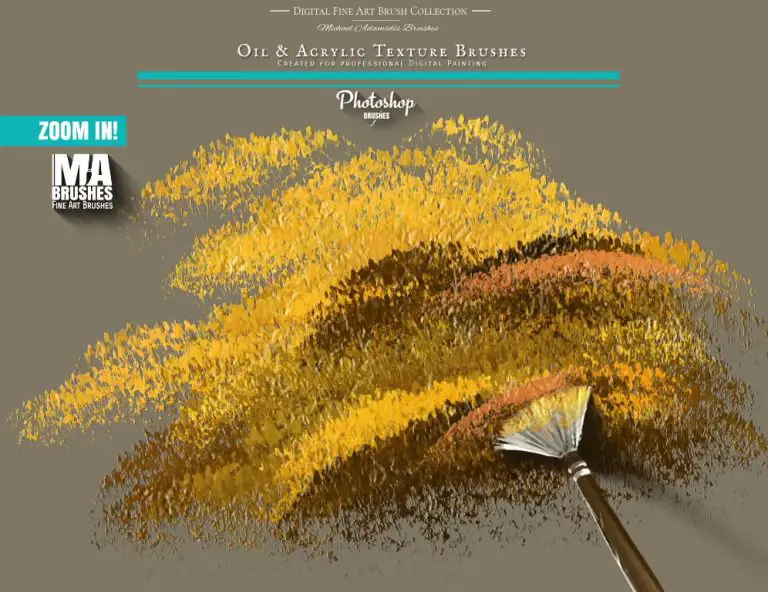How Do You Harden Oil-Based Clay?
Oil-based clay is a type of modeling clay made from various natural ingredients which have a soft, malleable consistency at room temperature. Unlike water-based clays, oil-based clays contain no water in their manufacturing and are therefore not as prone to drying out. There are several different common types of oil-based clays:
- Plasticine – a brand name for oil-based modeling clay made from calcium salts, petroleum jelly, and long-chain aliphatic acids. It has a smooth, non-sticky finish.
- Polymer clay – made from plasticizers mixed with PVC resin particles. Popular brands like Sculpey and FIMO have many bright colors.
- Cold porcelain – a non-hardening clay made from a non-toxic mix of corn starch, white glue, and oil which has a porcelain-like texture.
- Oil clay – an additive-free clay based solely on mineral oil ingredients. Often used for medical and occupational therapy applications.
All oil-based clays can be hardened using various techniques, which transforms them into more durable permanent solid forms. Common hardening methods include oven baking, drying, and using chemical additives.
Drying Oil-Based Clay Naturally
The most natural and simplest way to harden oil-based clay is to expose it to air over an extended period of time. The process allows the oil in the clay to oxidize and cure slowly. Here’s how to naturally dry oil-based clay:
- Roll the clay into balls or flatten into sheets less than 1⁄4-inch thick. Thicker pieces will take exponentially longer to fully cure.
- Place the clay on a baking sheet or ceramic tile in an area with good air circulation and little humidity.
- Allow the clay to cure for 24-48 hours if under 1⁄4-inch thick. Pieces larger than 1⁄4-inch may require weeks to thoroughly harden.
- Check for hardness by touching the thickest area gently with your finger. The clay is cured when no indent remains.
- Store fully hardened pieces in resealable plastic bags.
Exposing clay to moving air speeds up the hardening process significantly compared to sealing it in a plastic bag. Placing clay in direct sunlight can also help it cure faster. Just be sure to flip the pieces regularly so all sides harden evenly.
Baking Oil-Based Clay
Baking is one of the most efficient ways to harden oil-based clay quickly. It drives off moisture and accelerates the polymerization of the oils, hardening the clay. However, care must be taken to avoid overheating the clay which can burn the material or cause warping and cracking.
The ideal baking temperature for oil-based clay is usually around 130 degrees Celsius or 265 Fahrenheit. At these temperatures, the clay can harden in as little as 15 minutes. However, baking times can vary widely based on the size and thickness of your clay sculpture, as well as your oven’s consistency in maintaining the temperature.
To bake the clay, form your sculpture then place it on an oven safe tray or ceramic surface. Preheat your oven to 130 C / 265 F. Once preheated, place your clay sculpture inside and set a timer for 15 minutes. Check the clay after 15 minutes. If the surface still feels tacky or soft, cook longer in 5 minute increments, checking after each addition of time.
As the clay gets closer to being fully hardened, keep a closer eye on it to avoid overcooking. The surface should feel dry, smooth and hard when fully cured with no soft spots. Let the sculpture fully cool after baking before handling.
Adding Clay Hardener
Clay hardener can be added to oil-based clay to chemically harden the clay. Clay hardeners typically come in liquid or powder form. Common types of clay hardeners include:
- Sculpey Clay Hardener – a clear liquid hardener
- Kato Liquid Polyclay Hardener – a transparent liquid hardener
- FIMO Liquid Hardener – a colorless liquid hardener
- SuperSculpey Sculpting Firm – a white powder that works as a hardening agent
To use a liquid clay hardener, mix in anywhere from 15-30 drops per ounce of oil-based clay. Mix thoroughly to fully distribute the hardener throughout the clay. The more hardener added, the firmer and harder the clay will become.
For powder hardeners, start by adding about 1/4 to 1/2 a teaspoon per ounce of oil-based clay. Mix thoroughly, then continue kneading the clay until it reaches the desired hardness. Too much powder hardener may make the clay brittle, so add gradually.
Allow the clay to sit for 24 hours after mixing in hardener for full hardening. Store any unused hardened clay in an airtight container.
Freezing Oil-Based Clay
Freezing is a quick and easy process for hardening oil-based clays. Simply place the clay in an air-tight container or plastic to prevent freezer burn, then freeze for at least 30-60 minutes. The cold temperature causes the clay to firm up and become much more rigid. To achieve desired hardness, check the clay frequently for progress.
How long you freeze the clay depends on the size and thickness of the piece. One or two hour increments is recommended to start, then remove and test the hardness. Simply bend, dent, and squeeze the clay to determine if it has reached its peak hardness, and freeze again if additional rigidity is desired.
Once frozen to the desired level, make sure to double wrap the clay in plastic or an air-tight container before returning to room temperature. This helps prevent condensation and prevents the clay from softening prematurely. The clay will keep its shape and hardness, provided it is protected while thawing gradually.
If the clay does begin to soften on thawing, it often needs additional freezing time to fully set. Repeat 1-2 hour freezing increment until peak hardness without softening is achieved.
Using Hairdryers and Heat Guns
Hairdryers and heat guns both provide a powerful stream of warm or hot air that can be used to quickly harden oil-based clays. When using these tools, there are a few important considerations:
-
Use a low setting—high heat can scorch or burn the clay. Medium or low settings are best.
-
Move the air stream constantly—don’t keep it aimed in one spot. Keep the air stream moving at all times to evenly distribute the heat.
-
Check the clay regularly—test and bend the clay periodically to gauge the level of hardness.
-
Keep a bit of distance—hold the heat source at least 6 inches away to avoid uneven heating and potential burning.
-
Let the clay cool between heating—you might need to apply heat multiple times to let the warmth disperse evenly through the clay before continuing.
Following these guidelines will help harden your oil-based clay quickly and safely with a handy hairdryer or heat gun.
Microwaving Oil-Based Clay
Microwaves can quickly harden oil-based clays, but must be used carefully to avoid overheating. When microwaving clay, it’s best to use a microwave-safe container, start at a low power level (30-50%), and heat in short intervals of about 10 seconds.
Check the clay often as you microwave. Oil-based clays can go from soft and pliable to melted very quickly. If overheated, the clay may bubble, boil, or emit smoke. As soon as the clay loses its cool, soft feel and starts to feel warm, stop microwaving.
Larger or dense clay pieces may require more microwave time on lower power levels. Thinner pieces or clay with additives like clay softener will heat faster. Adjust microwave power and timing based on your specific clay piece, composition, thickness, and desired hardness level.
Air-Drying Clay Accelerants
You can speed up the natural air drying process of oil-based clays by using air-drying clay accelerants. These are materials that help absorb moisture from the clay:
Sawdust – Mix a small amount of fine sawdust into the clay while kneading. The sawdust will draw moisture out.
Cornstarch – Sprinkle some cornstarch on the surface of the clay and knead it in. The cornstarch will soak up excess moisture. Be careful not to use too much cornstarch as this can make the clay brittle.
Plaster of Paris – Adding a very small amount of plaster while kneading can accelerate drying time. As with cornstarch, too much plaster can make the clay prone to cracking.
Storing Hardened Clay
When hardened clay is exposed to moisture, it can re-soften and lose its shape. To avoid this:
- Store finished clay sculptures in an air-tight container with desiccant packs.
- Wrap hardened clay tightly in plastic wrap before placing it in a storage container.
- Keep storage containers in a dry area away from direct sunlight and humidity sources like sinks or water heaters.
- Consider storing clay sculptures in the freezer to maintain hardness if humidity can’t be fully controlled.
Let me know if you would like me to elaborate on any part of the storage section. I aimed to provide helpful, practical tips for anyone wanting to store oil-based clay properly after hardening without introducing sources.
Troubleshooting
If your oil-based clay is not hardening properly, there are a few issues that may be causing problems and solutions to try:
Cracking
If your clay sculpture is cracking excessively as it dries, the clay was likely conditioned with too much liquid when you were working with it. Try using less softener when conditioning the clay next time. You can also apply a thin layer of liquid clay to cracks as needed to patch and fill them in.
Stickiness
If your oil-based clay remains sticky or tacky even after extensive drying time, there are a couple possible reasons. The clay may have too much oil content – try a clay with lower oil levels. Or, the environment may be too humid and preventing the clay from hardening. Move the clay to a drier area or use a dehumidifier.
Warping
If your clay sculpture warps or changes shape as it dries, the wall thickness of the sculpture may be uneven. As thicker areas dry slower than thinner ones, warping can occur. Ensure the next sculpture has close to even thickness throughout to allow for uniform drying.


